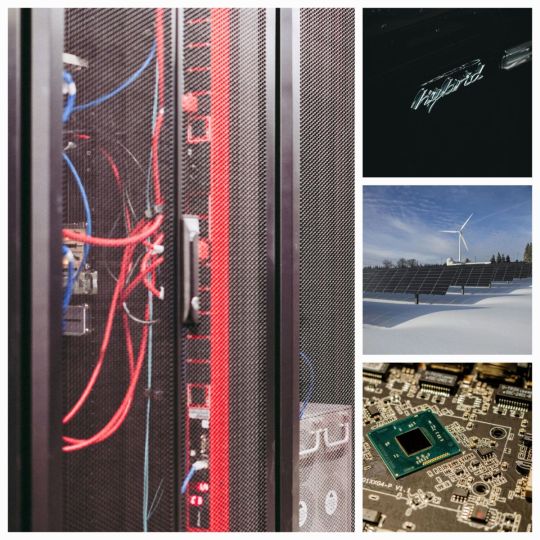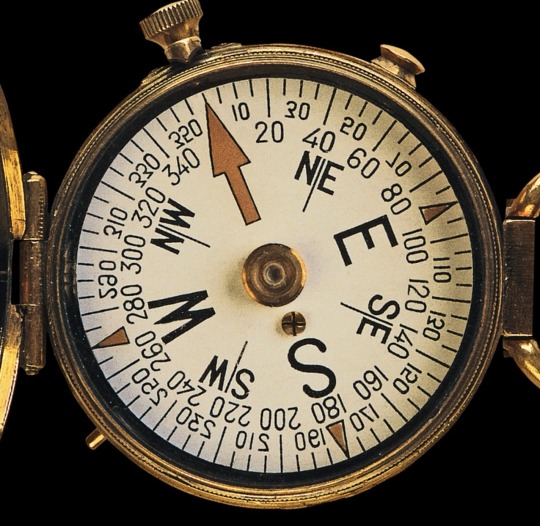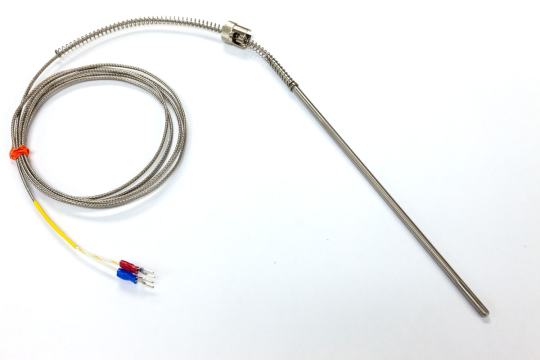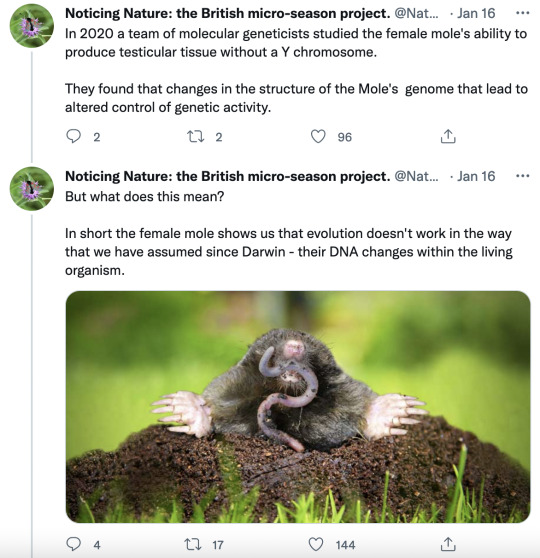#Measurement And Regulatory
Text
Measurement And Regulatory
Blue chip esg- measurement and regulatory, regulatory compliance reporting, epap
river alberta, enhanced production audit program, measurement & reporting compliance and oil and gas measurement edmonton
Measurement And Regulatory
0 notes
Text
Measurement And Regulatory | Bluechipesg.com
Blue chip esg- measurement and regulatory, regulatory compliance reporting, epap peace river alberta, enhanced production audit program, measurement & reporting compliance and oil and gas measurement edmonton
Measurement And Regulatory
1 note
·
View note
Text
Measurement And Regulatory | Bluechipesg.com

We are Providing quality, economical, and reliable measurement and reporting compliance services throughout the oil and gas industry. Measurement Regulatory Compliance Reporting
Measurement And Regulatory
0 notes
Text
Measurement And Regulatory | Bluechipesg.com
We are Providing quality, economical, and reliable measurement and reporting compliance services throughout the oil and gas industry. Measurement Regulatory Compliance Reporting
Measurement And Regulatory
0 notes
Text
Measurement And Regulatory | Bluechipesg.com
We are Providing quality, economical, and reliable measurement and reporting compliance services throughout the oil and gas industry. Measurement Regulatory Compliance Reporting
Measurement And Regulatory
0 notes
Text
Understanding Fraud in Cryptocurrency and How AIO Legal Services Can Help
Cryptocurrency has gained significant popularity and acceptance over the past decade. Bitcoin, Ethereum, and a host of other cryptocurrencies have revolutionised the financial landscape, offering decentralised and often anonymous transactions. However, this innovation has also opened new avenues for fraud. The unregulated nature of many cryptocurrencies, combined with their anonymity, has made…

View On WordPress
#AIOLawyers.com#anonymous transactions#anti-fraud measures#Bitcoin#blockchain#cryptocurrency#cryptocurrency exchange#decentralized#digital assets#Ethereum#exchange hacks#fraud#ICO scams#investment scams#legal assistance#Legal Representation#phishing scams#Ponzi schemes#recovery services#regulatory compliance#secure transactions.
0 notes
Text
Reimagining the Energy Landscape: AI's Growing Hunger for Computing Power #BlogchatterA2Z
Reimagining the Energy Landscape: AI's Growing Hunger for Computing Power #BlogchatterA2Z #AIdevelopment #energyConsumption #DataCenterInfrastructure #ArmHoldings #energyEfficiency #SustainableTechnology #RenewableEnergy #EdgeComputing #RegulatoryMeasures
Navigating the Energy Conundrum: AI’s Growing Hunger for Computing Power
In the ever-expanding realm of artificial intelligence (AI), the voracious appetite for computing power threatens to outpace our energy sources, sparking urgent calls for a shift in approach. According to Rene Haas, Chief Executive Officer of Arm Holdings Plc, by the year 2030, data centers worldwide are projected to…

View On WordPress
#AI Development#Arm Holdings#Custom-built chips#Data center infrastructure#Edge computing#Energy consumption#energy efficiency#Regulatory measures#Renewable Energy#Sustainable technology
0 notes
Text
Comprehensive Overview of Engineering Services by Little P.Eng. Engineering Consultant
Little P.Eng. Engineering Consultant is a highly reputable firm renowned for its expertise in providing a wide range of engineering services. With a dedicated team of professionals, state-of-the-art technology, and a commitment to excellence, Little P.Eng. serves various industries and clients across the globe. In this comprehensive article, we will explore the key engineering services offered by Little P.Eng., including material handling, seismic design, structural engineering, piping stress analysis, above-ground tank design, and pressure vessel design.
Introduction to Little P.Eng. Engineering Consultant
Little P.Eng. Engineering Consultant is a leading player in the engineering consulting domain, offering innovative solutions and technical expertise to address the unique challenges faced by industries such as manufacturing, construction, energy, and petrochemicals. The firm's success is founded on a solid reputation for delivering cost-effective and reliable engineering solutions.
The Core Values of Little P.Eng. Engineering Consultant
Excellence: The firm strives for excellence in all its endeavors, aiming to exceed client expectations in every project.
Integrity: Little P.Eng. operates with utmost integrity, ensuring transparency, honesty, and ethical practices throughout its operations.
Innovation: Innovation is at the heart of the firm's approach. It constantly explores new technologies and methodologies to stay at the forefront of the industry.
Safety: Safety is a top priority, and the firm places great emphasis on designing structures and systems that prioritize the safety of personnel and the environment.
Now, let's dive into the detailed engineering services offered by Little P.Eng. Engineering Consultant:
1. Material Handling Engineering
Material handling engineering is an integral aspect of modern industrial operations. It involves the design and optimization of systems and equipment for the efficient movement, storage, control, and protection of materials and products. Little P.Eng.'s material handling experts excel in creating tailored solutions that enhance productivity, reduce manual labor, and ensure the safe flow of materials.
Key Aspects of Material Handling Engineering by Little P.Eng.
a. Conveyor Systems
Little P.Eng. Engineering Consultant specializes in the design and implementation of conveyor systems customized to specific industries and requirements. These systems facilitate the smooth and automated movement of goods within facilities, leading to streamlined production processes and reduced labor costs.
b. Automated Material Handling
Automation is a significant trend in material handling, and Little P.Eng. is at the forefront of implementing cutting-edge robotic and automation technologies. These innovations optimize operations by reducing errors and increasing efficiency.
c. Warehouse Design
Little P.Eng. ensures that warehouse layouts are optimized for maximum storage capacity and accessibility. Their designs enhance inventory management and expedite order fulfillment, resulting in improved overall operational efficiency.
d. Packaging Equipment
Packaging plays a crucial role in product protection and presentation. Little P.Eng. Engineering Consultant designs packaging equipment tailored to handle various materials and products efficiently, enhancing the final product's quality and appearance.
e. Safety Measures
Safety is paramount in material handling, and Little P.Eng. prioritizes the design of systems that minimize risks associated with material movement and handling. This includes comprehensive safety measures and training for personnel.
2. Seismic Design
Seismic design is a specialized field focused on ensuring that buildings and structures can withstand the forces generated by earthquakes. As seismic events can cause catastrophic damage, Little P.Eng. Engineering Consultant excels in designing structures that prioritize safety and resilience in seismic-prone areas.
Key Aspects of Seismic Design by Little P.Eng.
a. Seismic Hazard Assessment
Little P.Eng.'s seismic design experts perform thorough seismic hazard assessments by analyzing historical data, fault lines, and ground motion characteristics. This data informs the design process, ensuring structures are prepared for potential seismic events.
b. Structural Analysis
Seismic design requires an in-depth understanding of structural analysis to assess how a building or structure will respond to seismic forces. Little P.Eng.'s engineers employ advanced analysis techniques to ensure structural integrity.
c. Innovative Design Techniques
Little P.Eng. embraces innovative seismic design techniques, including base isolators, damping systems, and the use of reinforced materials. These approaches enhance a structure's ability to withstand seismic forces.
d. Code Compliance
Compliance with building codes and seismic design standards is paramount. Little P.Eng. Engineering Consultant ensures that all designs meet or exceed the necessary regulatory requirements to guarantee the safety of structures in seismic-prone regions.
e. Retrofitting and Rehabilitation
In addition to new construction, Little P.Eng. offers retrofitting and rehabilitation services for existing structures, bringing them up to modern seismic standards and ensuring their ongoing safety.
3. Structural Engineering
Structural engineering is the cornerstone of designing and constructing safe, robust, and resilient buildings, bridges, dams, towers, and other critical infrastructure. Little P.Eng. excels in the design and evaluation of structural systems to ensure their stability and safety under various loads.
Key Aspects of Structural Engineering by Little P.Eng.
a. Load Analysis
Little P.Eng.'s structural engineers are experts in calculating loads, stresses, and deformations on structures. They perform comprehensive load analyses to determine the most suitable structural solutions.
b. Material Selection
Choosing the right materials is crucial for structural integrity and durability. Little P.Eng. considers factors such as the type of structure, environmental conditions, and budget constraints to make informed material selections.
c. Structural Systems
Little P.Eng. engineers meticulously design structural systems, including beams, columns, and foundations, to efficiently distribute loads and prevent structural failure. Innovative solutions are employed to optimize performance.
d. Computer-Aided Design
Advanced software tools play a vital role in structural engineering. Little P.Eng. utilizes cutting-edge software for structural analysis and design, allowing for precise calculations, simulations, and 3D modeling.
e. Safety Standards
Safety is a top priority in structural engineering. Little P.Eng. ensures strict compliance with safety standards and building codes to protect the well-being of the public and occupants of structures.
4. Piping Stress Analysis
In industries where industrial piping systems are prevalent, such as petrochemical plants, power facilities, and refineries, piping stress analysis is crucial. Little P.Eng. specializes in designing and evaluating these systems to ensure they can withstand thermal expansion, contraction, pressure, and other forces without failure or leaks.
Key Aspects of Piping Stress Analysis by Little P.Eng.
a. Layout and Design
Little P.Eng.'s experts work on the layout and design of complex piping networks, accounting for factors like fluid flow, temperature changes, and equipment connections. Their designs optimize performance and minimize energy consumption.
b. Stress Calculations
Engineers at Little P.Eng. calculate stresses and deformations in piping systems using advanced software. This includes considering thermal gradients, pressure differentials, and material properties to ensure structural integrity.
c. Support Systems
Proper support systems and hangers are essential to prevent sagging, vibration, and excessive stress on pipes. Little P.Eng. designs support systems that enhance the longevity of piping networks.
d. Material Selection
Selecting the appropriate materials is critical to withstand corrosive substances, high temperatures, and high-pressure conditions. Little P.Eng. engineers make informed material choices to ensure durability.
e. Code Compliance
Little P.Eng. ensures that all piping systems adhere to industry standards and codes, such as ASME B31.3 for process piping. Compliance is vital for the safety and regulatory compliance of the systems.
5. Above-Ground Tank Design
Above-ground tanks are widely used for storing liquids and gases in various industries, including oil and gas, chemical processing, and water treatment. Little P.Eng. specializes in designing these tanks to meet specific requirements while ensuring safety and compliance.
Key Aspects of Above-Ground Tank Design by Little P.Eng.
a. Tank Sizing
Little P.Eng. engineers determine the appropriate tank size based on the volume and characteristics of the stored materials. Their designs optimize space and efficiency.
b. Material Selection
The choice of tank material is a critical consideration, and Little P.Eng. selects materials that align with the type of substance being stored, whether it is corrosive, flammable, or sensitive to temperature changes.
c. Construction Methods
Above-ground tanks can be constructed using various methods, including welded steel, concrete, and fiberglass. Little P.Eng. evaluates the best construction method based on project-specific requirements and regulations.
d. Safety Features
Safety features are paramount in tank design. Little P.Eng. ensures that tanks incorporate features such as overflow protection, pressure relief systems, and leak detection to prevent accidents and environmental damage.
e. Regulatory Compliance
Design consultants at Little P.Eng. ensure that above-ground tanks meet all regulatory requirements, including those outlined in codes like API 650 for steel tanks. Compliance is essential for environmental protection and safety.
6. Pressure Vessel Design
Pressure vessels are critical components in industries dealing with pressurized fluids or gases, such as chemical manufacturing, energy production, and petrochemical processing. Little P.Eng. specializes in designing pressure vessels to safely withstand high internal or external pressures.
Key Aspects of Pressure Vessel Design by Little P.Eng.
a. Material Properties
Little P.Eng. engineers carefully select materials with the necessary strength and corrosion resistance to withstand the specific service conditions of pressure vessels.
b. Thickness Calculations
Calculations of vessel wall thickness are crucial to ensure structural integrity and safety under pressure. Little P.Eng. performs precise calculations to determine optimal thickness.
c. Welding and Fabrication
The welding and fabrication methods used in pressure vessel construction must meet rigorous standards. Little P.Eng. employs certified welding procedures to prevent defects and ensure vessel reliability.
d. Testing and Inspection
Pressure vessels undergo rigorous testing and inspection processes to verify their integrity. Little P.Eng. engineers conduct comprehensive testing to ensure vessels are safe for operation.
e. Code Compliance
Little P.Eng. Engineering Consultant is well-versed in codes such as the ASME Boiler and Pressure Vessel Code. The firm ensures that all pressure vessel designs and constructions adhere to these codes and regulations.
Conclusion
Little P.Eng. Engineering Consultant is a leading provider of engineering services that encompass material handling, seismic design, structural engineering, piping stress analysis, above-ground tank design, and pressure vessel design. The firm's unwavering commitment to excellence, safety, innovation, and regulatory compliance has earned it a reputation as a trusted partner in diverse industries.
With a dedicated team of experts and cutting-edge technology, Little P.Eng. delivers cost-effective solutions that prioritize safety, sustainability, and efficiency. Whether it's designing structures to withstand earthquakes or optimizing material handling systems, Little P.Eng. Engineering Consultant stands at the forefront of engineering innovation, contributing to the development of safer, more resilient, and more productive industries worldwide.
Tags:
Engineering Services
Seismic Design
Piping Stress Analysis
Structural Engineering
Pressure Vessel Design
Material Selection
Regulatory Compliance
Little P.Eng. Engineering Consultant
Seismic Hazard Assessment
Structural Resilience
Engineering Innovation
Material Handling Engineering
Above-Ground Tank Design
Excellence in Engineering
Innovative Solutions
Safety Measures
Compliance with Codes
Structural Analysis
Automated Material Handling
Conveyor Systems
Warehouse Design
Packaging Equipment
Retrofitting and Rehabilitation
Load Analysis
Support Systems
Welding and Fabrication
Tank Sizing
Construction Methods
Pressure Vessel Testing
Welding Procedures
Engineering Services
Structural Engineering Consultancy
Pipe Stress Analysis Services
Located in Calgary, Alberta; Vancouver, BC; Toronto, Ontario; Edmonton, Alberta; Houston Texas; Torrance, California; El Segundo, CA; Manhattan Beach, CA; Concord, CA; We offer our engineering consultancy services across Canada and United States. Meena Rezkallah.
#•#Engineering Services#Seismic Design#Piping Stress Analysis#Structural Engineering#Pressure Vessel Design#Material Selection#Regulatory Compliance#Little P.Eng. Engineering Consultant#Seismic Hazard Assessment#Structural Resilience#Engineering Innovation#Material Handling Engineering#Above-Ground Tank Design#Excellence in Engineering#Innovative Solutions#Safety Measures#Compliance with Codes#Structural Analysis#Automated Material Handling#Conveyor Systems#Warehouse Design#Packaging Equipment#Retrofitting and Rehabilitation#Load Analysis#Support Systems#Welding and Fabrication#Tank Sizing#Construction Methods#Pressure Vessel Testing
0 notes
Text
Navigating Legal Challenges in Construction Safety Compliance
Navigating legal challenges in construction safety compliance involves a multifaceted approach. Understanding the legal landscape is just the beginning. It’s essential for construction firms to actively engage with current regulations, which often vary by location and the specific nature of a project. A proactive stance is crucial, not only to comply with the myriad of safety laws but also to…

View On WordPress
#building codes#construction law#Construction Safety#incident response#legal compliance#OSHA standards#proactive measures#regulatory adherence#risk assessment#safety documentation#Safety Training#Workplace Safety
0 notes
Text
im being extremely serious, something needs to be done about the brightness of car headlights, its an active public safety hazard. and as far as regulatory measures go, this seems like something with a (comparatively) very easy fix....? yeah conservatives will be all "come and take it" about it but they do that with literally fucking everything bc petulant commitment to making a culture war out of any regulation or mandated changes.
its insane that we've all just collectively accepted that its normal and fine that someone driving a standard sized 4 door sedan will be momentarily blinded by the EYE-LEVEL blue-white LED headlights on the latest model of the suburbitank Pedestrian Pulverizer 3000 or whatever the fuck
#like literally on a dark road or highway at night it can take ur eyes a few moments to readjust#during which u literally cant see anything and ur piloting a 2-ton hunk of metal going like 40mph...!!!
10K notes
·
View notes
Text
Medical Grade Thermocouple Wire Market Overview and Regional Outlook Study 2017 – 2032

The market for medical grade thermocouple wire is witnessing steady growth due to the increasing demand for accurate and reliable temperature measurement in the medical industry. Thermocouples are widely used in various medical applications, including monitoring body temperature, laboratory testing, and medical equipment calibration.
Market Overview of Medical Grade Thermocouple Wire:
Technological Advancements: Advancements in thermocouple wire technology, such as the development of high-precision sensors and miniaturization, are driving the market growth. These advancements enable accurate temperature measurements in medical devices.
Healthcare Industry Expansion: The expanding healthcare industry, including hospitals, clinics, and research laboratories, is creating a substantial demand for medical grade thermocouple wire. These wires are widely used in medical devices, such as patient monitoring systems, incubators, and surgical equipment.
Stringent Regulations: The medical industry is subject to strict regulations regarding patient safety and product quality. Medical grade thermocouple wires comply with these regulations, ensuring reliability and accuracy in temperature measurement, which is a key factor driving their adoption.
Increasing Awareness: Growing awareness among healthcare professionals and researchers about the benefits of using thermocouple wires in medical applications is boosting the market. These wires offer advantages such as high accuracy, fast response time, and compatibility with various medical devices.
Key Factors Driving the Medical Grade Thermocouple Wire Market:
Rising Focus on Patient Safety: The healthcare industry's increasing emphasis on patient safety and comfort is driving the demand for medical grade thermocouple wires. These wires help in precise temperature monitoring, ensuring optimal patient care.
Growing Demand for Minimally Invasive Procedures: The rising preference for minimally invasive procedures requires accurate temperature sensing and monitoring during surgeries. Medical grade thermocouple wires enable real-time temperature measurements, enhancing the safety and success rates of such procedures.
Advancements in Medical Device Technologies: The continuous advancements in medical device technologies, such as wearable devices and remote patient monitoring systems, are fueling the demand for medical grade thermocouple wires. These wires play a crucial role in temperature sensing within these devices.
Increasing Research and Development Activities: The ongoing research and development activities in the medical field, including the development of new drugs, medical treatments, and diagnostic techniques, rely on accurate temperature measurements. Medical grade thermocouple wires are essential components in such research activities.
Growing Geriatric Population: The global increase in the geriatric population is driving the demand for medical devices and healthcare services. Medical grade thermocouple wires find extensive applications in temperature monitoring devices used for elderly care, such as patient monitors and wearable health trackers.
COVID-19 Impact: The COVID-19 pandemic has increased the demand for medical devices and equipment, including temperature monitoring systems. Thermocouple wires are used in various COVID-19-related applications, such as vaccine storage and transport, ICU patient monitoring, and fever detection systems.
Expansion of Home Healthcare: The rising trend of home healthcare services and the need for portable medical devices have led to an increased demand for medical grade thermocouple wires. These wires enable temperature monitoring in portable devices used for home healthcare purposes.
Increasing Adoption of Wireless Thermocouple Systems: The market is witnessing a shift towards wireless thermocouple systems, which offer convenience, ease of use, and reduced clutter. Medical grade thermocouple wires are an integral part of these wireless systems, driving their demand.
Collaborations and Partnerships: Key players in the medical device industry are entering into collaborations and partnerships to develop innovative solutions. Such collaborations involving medical grade thermocouple wire manufacturers contribute to market growth.
Growing Focus on Precision Medicine: The increasing focus on precision medicine, which involves personalized treatment based on individual characteristics, requires accurate temperature monitoring in various medical procedures. Medical grade thermocouple wires play a vital role in delivering precise temperature measurements for effective treatment outcomes.
We recommend referring our Stringent datalytics firm, industry publications, and websites that specialize in providing market reports. These sources often offer comprehensive analysis, market trends, growth forecasts, competitive landscape, and other valuable insights into this market.
By visiting our website or contacting us directly, you can explore the availability of specific reports related to this market. These reports often require a purchase or subscription, but we provide comprehensive and in-depth information that can be valuable for businesses, investors, and individuals interested in this market.
“Remember to look for recent reports to ensure you have the most current and relevant information.”
Click Here, To Get Free Sample Report: https://stringentdatalytics.com/sample-request/medical-grade-thermocouple-wire-market/3577/
Market Segmentations:
Global Medical Grade Thermocouple Wire Market: By Company
• TE Wire&Cable
• Johnson Matthey
• Heraeus
• Sandvik (Kanthal)
• BASF
• OMEGA Engineering
• Belden
• Pelican Wire
• National Instruments
• Indutrade (Pentronic)
• Pyromation
• Dwyer Instruments
• Tempco
• Durex Industries
• Marlin Manufacturing Corporation
• Multi/Cable Corporation
• Ellab
• Temprel
• Thermo-Electra
• Hayashidenko
Global Medical Grade Thermocouple Wire Market: By Type
• Type T
• Type K
• Other
Global Medical Grade Thermocouple Wire Market: By Application
• Pharmaceutical Enterprise
• Hospital
• Other
Global Medical Grade Thermocouple Wire Market: Regional Analysis
All the regional segmentation has been studied based on recent and future trends, and the market is forecasted throughout the prediction period. The countries covered in the regional analysis of the Global Medical Grade Thermocouple Wire market report are U.S., Canada, and Mexico in North America, Germany, France, U.K., Russia, Italy, Spain, Turkey, Netherlands, Switzerland, Belgium, and Rest of Europe in Europe, Singapore, Malaysia, Australia, Thailand, Indonesia, Philippines, China, Japan, India, South Korea, Rest of Asia-Pacific (APAC) in the Asia-Pacific (APAC), Saudi Arabia, U.A.E, South Africa, Egypt, Israel, Rest of Middle East and Africa (MEA) as a part of Middle East and Africa (MEA), and Argentina, Brazil, and Rest of South America as part of South America.
Visit Report Page for More Details: https://stringentdatalytics.com/reports/medical-grade-thermocouple-wire-market/3577/
Reasons to Purchase Medical Grade Thermocouple Wire Market Report:
• To obtain insights into industry trends and dynamics, including market size, growth rates, and important factors and difficulties. This study offers insightful information on these topics.
• To identify important participants and rivals: This research studies can assist companies in identifying key participants and rivals in their sector, along with their market share, business plans, and strengths and weaknesses.
• To comprehend consumer behaviour: these research studies can offer insightful information about customer behaviour, including preferences, spending patterns, and demographics.
• To assess market opportunities: These research studies can aid companies in assessing market chances, such as prospective new goods or services, fresh markets, and new trends.
• To make well-informed business decisions: These research reports give companies data-driven insights that they may use to plan their strategy, develop new products, and devise marketing and advertising plans.
In general, market research studies offer companies and organisations useful data that can aid in making decisions and maintaining competitiveness in their industry. They can offer a strong basis for decision-making, strategy formulation, and company planning.
Medical Grade Thermocouple Wire Market Research Report Contains Answers to your following Questions
Which Manufacturing Technology is Used for Medical Grade Thermocouple Wire? What Developments Are Going On in That Technology? Which Trends Are Causing These Developments?
Who Are the Global Key Players in This Medical Grade Thermocouple Wire Market? What's Their Company Profile, Their Product Information, and Contact Information?
What Was Global Market Status of Medical Grade Thermocouple Wire Market? What Was Capacity, Production Value, Cost and PROFIT of Medical Grade Thermocouple Wire Market?
What Is Current Market Status of Medical Grade Thermocouple Wire Industry? What's Market Competition in This Industry, Both Company, and Country Wise? What's Market Analysis of Medical Grade Thermocouple Wire Market by Taking Applications and Types in Consideration?
What Are Projections of Global Medical Grade Thermocouple Wire Industry Considering Capacity, Production and Production Value? What Will Be the Estimation of Cost and Profit? What Will Be Market Share, Supply and Consumption? What about Import and Export?
What Is Medical Grade Thermocouple Wire Market Chain Analysis by Upstream Raw Materials and Downstream Industry?
What Is Economic Impact On Medical Grade Thermocouple Wire Industry?
What are Global Macroeconomic Environment Analysis Results? What Are Global Macroeconomic Environment Development Trends?
What Are Market Dynamics of Medical Grade Thermocouple Wire Market? What Are Challenges and Opportunities?
What Should Be Entry Strategies, Countermeasures to Economic Impact, Marketing Channels for Medical Grade Thermocouple Wire Industry?
Click Here, To Buy Premium Report: https://stringentdatalytics.com/purchase/medical-grade-thermocouple-wire-market/3577/?license=single
About US:
Stringent Datalytics offers both custom and syndicated market research reports. Custom market research reports are tailored to a specific client's needs and requirements. These reports provide unique insights into a particular industry or market segment and can help businesses make informed decisions about their strategies and operations.
Syndicated market research reports, on the other hand, are pre-existing reports that are available for purchase by multiple clients. These reports are often produced on a regular basis, such as annually or quarterly, and cover a broad range of industries and market segments. Syndicated reports provide clients with insights into industry trends, market sizes, and competitive landscapes. By offering both custom and syndicated reports, Stringent Datalytics can provide clients with a range of market research solutions that can be customized to their specific needs
Contact US:
Stringent Datalytics
Contact No - +1 346 666 6655
Email Id - [email protected]
Web - https://stringentdatalytics.com/
#Medical Grade Thermocouple Wire#Thermocouple Technology#Temperature Measurement#Medical Devices#Healthcare Industry#Biomedical Applications#Thermocouple Sensors#Medical Equipment#Temperature Monitoring#Diagnostic Devices#Surgical Instruments#Patient Care#Clinical Research#Temperature Sensing#Biotechnology#Laboratory Instruments#Quality Control#Regulatory Compliance#Medical Instrumentation#Patient Monitoring#Invasive Procedures#Medical Testing#Precision Measurement#Life Sciences#Remote Monitoring#Sterilization Processes#Heat Management#Data Logging#Therapeutic Devices#Research and Development.
0 notes
Text
Cryptocurrency Regulation in India: Guidelines, Policies
Cryptocurrency Regulation in India
This article on cryptocurrency regulation in India. In this article, we will cover the essential aspects of cryptocurrency regulation in India, including the legal status of cryptocurrencies, regulatory framework, licensing, taxation, and anti-money laundering (AML) measures.
Legal Status of Cryptocurrencies in India
The legal status of…

View On WordPress
#Anti-Money Laundering (AML)#Compliance Measures#Cryptocurrency regulation#Guidelines#India#Legal Framework#Legal Status#Licensing#Licensing Requirements#Policies#Regulation#Regulatory Framework#Taxation
1 note
·
View note
Text
"The sleeping giant of the US Environmental Protection Agency (EPA) has stirred.
In the past month, an avalanche of anti-pollution rules, targeting everything from toxic drinking water to planet-heating gases in the atmosphere, have been issued by the agency. Belatedly, the sizable weight of the US federal government is being thrown at longstanding environmental crises, including the climate emergency.
On Thursday [May 18, 2023], the EPA’s month of frenzied activity was crowned by the toughest ever limits upon carbon pollution from America’s power sector, with large, existing coal and gas plants told they must slash their emissions by 90% or face being shut down.
The measure will, the EPA says, wipe out more than 600m tons of carbon emissions over the next two decades, about double what the entire UK emits each year. But even this wasn’t the biggest pollution reduction announced in recent weeks.
In April, new emissions standards for cars and trucks will eliminate an expected 9bn tons of CO2 by the mid-point of the century, while separate rules issued late last year aim to slash hydrofluorocarbons, planet-heating gases used widely in refrigeration and air conditioning, by 4.6bn tons in the same timeframe. Methane, another highly potent greenhouse gas, will be curtailed by 810m tons over the next decade in another EPA edict.
In just a few short months the EPA, diminished and demoralized under Donald Trump, has flexed its regulatory muscles to the extent that 15bn tons of greenhouse gases – equivalent to about three times the US’s carbon pollution, or nearly half of the entire world’s annual fossil fuel emissions – are set to be prevented, transforming the power basis of Americans’ cars and homes in the process...
If last year’s Inflation Reduction Act (IRA), with its $370bn in clean energy subsidies and enticements for electric car buyers, was the carrot to reducing emissions, the EPA now appears to be bringing a hefty stick.
The IRA should help reduce US emissions by about 40% this decade but the cut needs to be deeper, up to half of 2005 levels, to give the world a chance of avoiding catastrophic heatwaves, wildfires, drought and other climate calamities. The new rules suddenly put America, after years of delay and political rancor, tantalizingly within reach of this...

“It’s clear we’ve reached a pivotal point in human history and it’s on all of us to act right now to protect our future,” said Michael Regan, the administrator of the EPA, in a speech last week at the University of Maryland. The venue was chosen in a nod to the young, climate-concerned voters Joe Biden hopes to court in next year’s presidential election, and who have been dismayed by Biden’s acquiescence to large-scale oil and gas drilling.
“Folks, this is our future we are talking about, and we have a once-in-a-generation opportunity for real climate action,” [Michael Regan, the administrator of the EPA], added. “Failure is not an option, indifference is not an option, inaction is not an option.” ...
It’s not just climate the EPA has acted upon in recent months. There are new standards for chemical plants, such as those that blight the so-called "Cancer Alley" the US, from emitting cancer-causing toxins such as benzene, ethylene oxide and vinyl chloride. New rules curbing mercury, arsenic and lead from industrial facilities have been released, as have tighter limits on emissions of soot and the first ever regulations targeting the presence of per- and polyfluoroalkylsubstances (or PFAS) in drinking water.” ...
For those inside the agency, the breakneck pace has been enervating. “It’s definitely a race against time,” said one senior EPA official, who asked not to be named. “The clock is ticking. It is a sprint through a marathon and it is exhausting.” ...
“We know the work to confront the climate crisis doesn’t stop at strong carbon pollution standards,” said Ben Jealous, the executive director of the Sierra Club.
“The continued use or expansion of fossil power plants is incompatible with a livable future. Simply put, we must not merely limit the use of fossil fuel electricity – we must end it entirely.”"
-via The Guardian (US), 5/16/23
#epa#environmental protection agency#united states#us politics#coal#cw cancer mention#pfas#sustainability#carbon emissions#good news#hope
6K notes
·
View notes
Text
Measurement And Regulatory | Bluechipesg.com
We are Providing quality, economical, and reliable measurement and reporting compliance services throughout the oil and gas industry. Measurement Regulatory Compliance Reporting\
Measurement And Regulatory
0 notes
Text
Have you heard about mole genders?










I’ve heard of this concept in sci-fi, but thought it was absolutely made up. I know some fish and frogs can change genders, but not in cycles like this. Wild. If I slapped this down in some alien world without explanation, I’d laugh in my own face. But no, real biology IS that bizarre.
Image descriptions:
A series of tweets from @NaturalCalendar that say:
Hello lovely Nature Noticers. It is time for today's thread! Follow me, and we'll delve deep into the subterranean and subversive world of Talpa europaea, the common European mole. We'll begin with a bombshell - there are no female moles.
Genetic researchers have recently discovered that female moles have reproductive organs unlike any other mammal. If measured by the standards of other species, there are no fully female moles. Instead, there are males and individuals that would be considered intersex.
So, lets look at how this works. Female Moles are called Sows. Sows have both ovarian AND testicular tissue They also have vaginas that disappear between breeding seasons!
Most of the year, female moles look and behave like males. They have masculinised genitals, with no external vagina + an enlarged clitoris. When this point in the year arrives, mating season begins. At this point the Sow's testosterone levels drop + they develop a vagina.
As is typical for mammals, Sows are equipped with two X chromosomes and Boars with an X and a Y chromosome. Unlike any other mammals Sows simultaneously develop functional ovarian and testicular tissues united in one organ, the 'ovotestis'. This is unique to Moles.
This testicular tissue does not produce sperm. It does however, produce large amounts of the sex hormone testosterone, meaning that Sows have similar testosterone levels to the Boars -except during mating season.
Scientists have hypothesized that these high levels of testosterone provide an adaptive advantage for the mole's underground life - providing added muscle mass for Sows who need to dig burrows and fight for resources for their offspring.
This is a dynamic process - the ovarian tissue that makes eggs and gets larger during breeding, then regresses. Outside of breeding season the testicular tissue, expands until it’s larger than the ovarian end - flooding the Sow's system with testosterone.
This explains why female moles have male-like genitalia... But it doesn't explain how patch of testicular tissue forms in female moles even though they do not have a Y chromosome. Up until recently the Y chromosome was thought to be fundamental to male sex determination.
In 2020 a team of molecular geneticists studied the female mole's ability to produce testicular tissue without a Y chromosome. They found that changes in the structure of the Mole's genome that lead to altered control of genetic activity.
But what does this mean? In short the female mole shows us that evolution doesn't work in the way that we have assumed since Darwin - their DNA changes within the living organism.
Since Darwin, it has been generally accepted that the different appearances of living organisms are the result of gradual changes in genetic makeup that have been passed onto subsequent generations - but Moles experience changes in the regulatory regions belonging to sex genes.
The researchers found that female moles do not have a Y chromosone but they do have a triple CYP17A1 gene. CYP17A1 is involved in the formation of steroid hormones + the triplication of this gene in the mole creates a dynamic sex regulatory system.
This dynamic process appends additional regulatory sequences to the gene and leads to an increased production of male sex hormones in the ovotestes of female moles, especially more testosterone.
What the intersexual mole shows us is how important the three-dimensional organization of the genome is for evolution. Nature makes use of existing developmental genes and rearranges them to create a characteristic such as intersexuality.
We see in the mole that evolution is not a linear process, arranged around the principle of Euclidian geometry. It is rather a topological process - a structure cast in rubber that is responsive and adaptive to the environment.
The mole also reminds us of the complexity of sexual development. The shifting sexual characteristics of the mole shows how the process of sexual development can, and does result in a wide range of natural variations.
#biology#gender#moles#fun animal facts#intersex#truth is stranger than fiction#yes I’ve read The Left Hand of Darkness#I’ve seen this idea elsewhere too#I had no idea it was based on something so exact#bonkers man#trans#mole genders
38K notes
·
View notes
Text
In photos of 2023’s World Economic Forum- or Davos as it is commonly called, after the Swiss resort town where it annually occurs- you might not notice the HEPA filters. They’re in the background, unobtrusive and unremarked upon, quietly cleansing the air of viruses and bacteria. You wouldn’t know- not unless you asked- that every attendee was PCR tested before entering the forum, or that in the case of a positive test, access was automatically, electronically, revoked. And if you happened to get a glimpse of the strange blue lights overhead, you could reasonably assume that their glow was simply a modern aesthetic choice, not the calming buzz of cutting edge Far UVC technology- demonstrated to kill microbes in the air.
It’s hard to square this information with the public narrative about COVID, isn’t it? President Biden has called the pandemic “over”. The New York Times recently claimed that “the risk of Covid is similar to that of the flu” in an article about “hold outs” that are annoyingly refusing to accept continual reinfection as their “new normal”. Yet, this week the richest people in the world are taking common sense, easy- but strict- precautions to ensure they don’t catch Covid-19 at Davos.
These common sense, easy precautions include high-quality ventiliation, use of Far UVC-lighting technology, and PCR testing. You’ll also see some masks at Davos, but generally, the testing + air filtration protocol seems to be effective at preventing the kind of super-spreader events most of us are now accustomed to attending.
It seems unlikely to me that a New York Times reporter will follow the super-rich around like David Attenborough on safari, the way one of their employees did when they profiled middle-class maskers last month. I doubt they will write “family members and friends can get a little exasperated by the hyper-concern” about the assembled Prime Ministers, Presidents and CEOs in Switzerland. After all, these are important people. The kind of people who merit high-quality ventilation. The kind of people who deserve accurate tests.
Why is the media so hellbent on portraying simple, scientifically proven measures like high-quality ventilation as ridiculous and unnecessary as hundreds of people continue to die daily here in the US?
Why is the public accepting a “new normal” where we are expected to get infected over and over and over again, at work events with zero precautions, on airplanes with no masks, and at social dinners trying to approximate our 2019 normal?
We deserve better. We deserve to be #DavosSafe as the hashtag going around on twitter puts it. Your children deserve to be treated with the care that world leaders are treating each other. Your family deserves to be protected from the disease which is still- unlike the flu- the third leading cause of death in the US. We don’t deserve to be shoved back into poorly ventilated workplaces while our politicians and press assure us that only crazy people would demand to breathe clean air.
Clean water and clean food are rights we fought for; we have regulatory bodies that ensure we aren’t exposed to pathogens via our water supply nor our food. In 1854, John Snow famously conducted his Broad Street Pump study in London and demonstrated that cholera was water-bourne; however, it took decades for our public policy to catch up with our scientific knowledge.
A public health case study published by the NBCI describes the years that followed:
The first use of chlorine as a disinfectant for water facilities was in 1897 in England. The first use of this method for municipal water facilities in the United States was in Jersey City, New Jersey, and Chicago, Illinois, in 1915. Other cities followed and the use of chlorination as standard treatment for water disinfection rapidly grew. During the 20th century, death rates from waterborne diseases decreased significantly, and although other additional factors contributed to the general improvements in health (such as sanitation, improved quality of life, and nutrition), the improvement of water quality was, without doubt, a major reason.
Forty-three years passed from the initial demonstration that pathogens were being spread via water, and public action and regulation to halt disease.
Can you imagine, in the 1890s, being somebody who argued against cleaning the water?
Can you imagine, in those years of plentiful cholera, calling the people who demanded shit-free water “hold outs”?
One thing COVID realists are accused of is being “doomsayers” and “fearmongers,” so let me share a dose of optimism about the future with you. When we choose- whenever we choose- to get COVID under control, there’s an exciting new world awaiting us. One, not only without constant COVID reinfection, but where our kids can grow up free of colds, flus, RSV, and many other common bugs. And no, contrary to what you may have heard, staying healthy (shockingly enough) is not bad for children!
Once we choose to institute ventilation standards and introduce new technologies like Far UVC lighting- and embrace masking as an easy, kind, and useful tool to control outbreaks- we can bring every nasty airborne pathogen under control the way we did cholera. We didn’t have the science before; now we do. (I mean that quite literally; I can’t recommend enough the linked Wired article cataloguing the long journey to establishing that Covid is, indeed, airborne).
We face a stark choice; down one road, the one with zero infrastructure upgrades, no air quality regulations, and Covid safety only for those who can afford it, you and your family will get Covid this year. You will get Covid next year. You will continue to get Covid over and over and over again, as the health problems - like cardiac damage, viral persistance, and immune system dysfunction- continue to build up. (The billionaires, of course, will not).
Down the other road, we quite simply treat ourselves the way Davos would. We engage with what the science is telling us and we build a safer, better world for our kids. We embrace the lessons this pandemic is teaching us, and let go of things we now know are harming people. We stop clinging desperately to the idea that 2019 will come back if we just get the virus one more time, and we come together to achieve what we’ve been told is impossible: elimination.
The economic elite thrive on our divisiveness and blame casting. They don’t mind that we’re calling each other names, engaging in racial stereotyping, or leaving disabled people to die, so long as we keep their machine running. But we can choose to stop throwing blame at each other, and direct it where it belongs: at the powerful people who’ve left us to suffer, at the politicians who are whipping people into a frenzy over masks instead of over our millions of dead, at the talking heads on TV that work so hard to convince us: you want to get sick. It’s better than being a *weirdo* or a *hold out*.
We needn’t wait 43 years to redirect our energies. France and Belgium have already introduced new air quality standards, and DIY projects to build Corsi-Rosenthal boxes for schools and healthcare settings have popped up around the country. We have the science, we have the technology. All we need now is the political will and the solidarity to truly end the pandemic- the kind of solidarity the super rich always show with one another.
The billionaires at Davos don’t accept continual Covid reinfection. They demand better. It’s time we demand better too.
8K notes
·
View notes